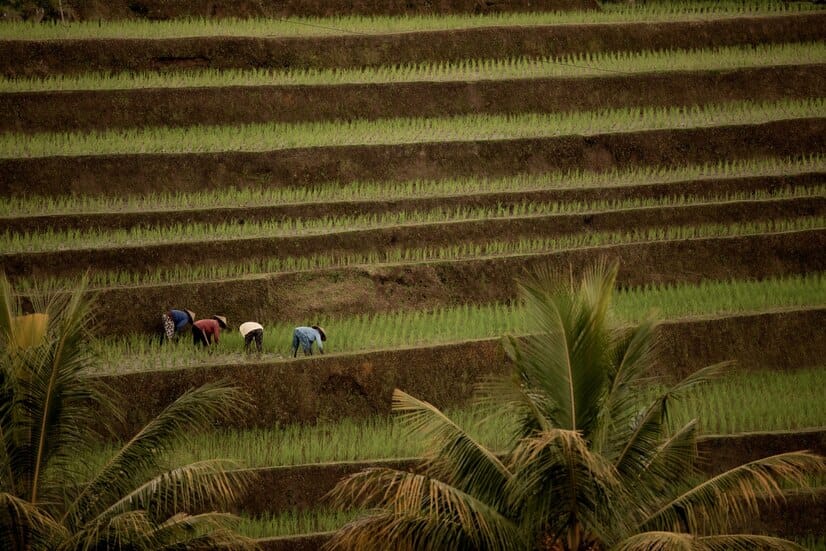
Terrace Farming
Sustainable Agriculture Insight from XRTech Group Maximizing Yields on Slopes: Terrace Farming, Conservation, and Precision Monitoring Explore the ancient practice
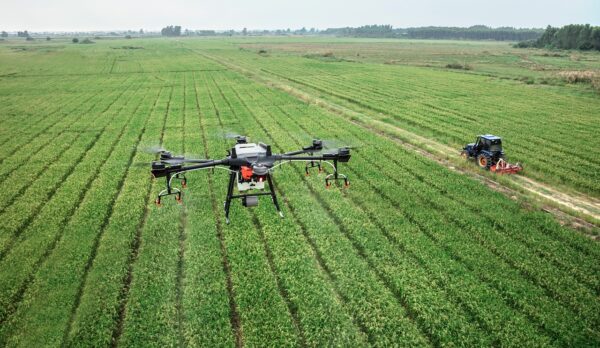
Farming today is much more than just planting seeds and waiting for them to grow. Farmers are using smart tools like UAV drones for agriculture crop monitoring and spraying to make their work easier and more efficient.
These drones, also called UAVs (Unmanned Aerial Vehicles), are helping farmers watch over their crops from the sky. In many parts of the world, drones in agriculture & farming are changing how we grow food by making farming faster and more accurate.
Farmers face many challenges like bad weather, plant diseases, and other issues that can damage crops. These problems can cost farmers a lot of money.
That’s why many farmers are turning to technology to help them protect their crops. One of the best tools they’re using is the drone for agriculture.
These flying machines can scan large fields, check for crop health, and even spray chemicals like pesticides in a precise way. The market for UAV drones for agriculture is growing quickly.
In 2024, it’s valued at $6.73 billion, and experts believe it could grow to $22.57 billion by 2030, with an annual growth rate of 19.6%.
Farming with drones isn’t just for big farms. These drones are helpful for both small and large farms. They’re used for many jobs like checking crop health, spraying fields, and protecting land from threats.
The data that drones collect is extremely useful. It helps farmers make smart decisions that can boost the amount of food they produce by up to 8%. In farming, where profit margins can be tight, this increase makes a huge difference.
Let’s dive deeper into how UAV drones for agriculture crop monitoring and spraying are being used today. Here’s some updated information about the role of drones in agriculture.
Checkout Autel EVO Lite Enterprise Here
Checkout DJI Mavic 3 Thermal Here
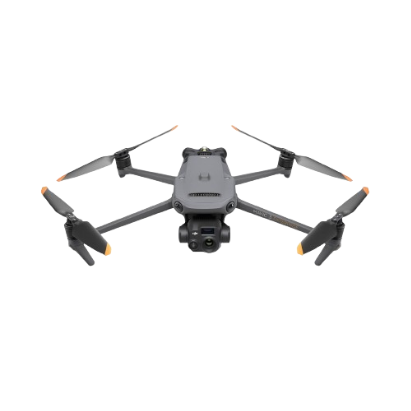
Overview: The DJI Mavic 3 Enterprise is a powerful tool for farmers. It’s a compact drone with advanced features, perfect for UAV drone for agriculture crop monitoring and spraying. This drone has a special thermal camera that can see temperature differences, making it easier to monitor crops and identify areas that need attention.
Key Benefits: The DJI Mavic 3 Enterprise can fly for a long time, letting you cover large areas of land. Its high-quality cameras help you see clear images of your crops. With thermal imaging, farmers can easily spot issues like pest infestations, water stress, or diseases in plants. This drone also avoids obstacles, making it safer to use around fields. It’s a great drone for agriculture, especially for farming with drones because it saves time and helps you focus on what your crops need most.
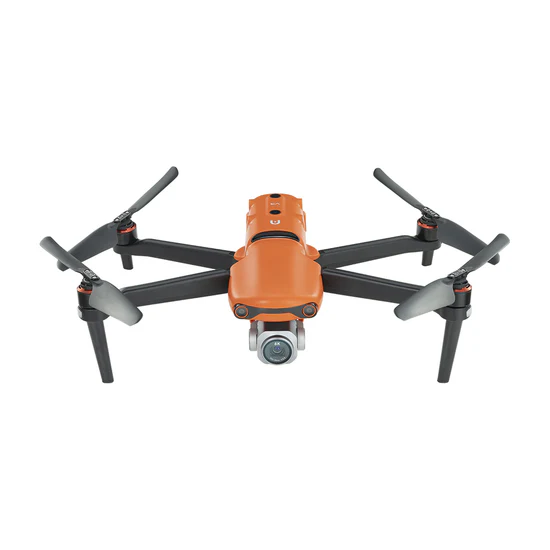
Overview: The EVO II Pro V3 is another excellent option for UAV for agriculture. Its strong camera capabilities make it great for taking clear pictures and videos of crops. This drone can capture 6K video and 20MP photos, providing sharp images that help farmers see every detail of their fields. It also performs well in low light, which is useful for early morning or late evening flights.
Key Benefits: The EVO II Pro V3 is ideal for agriculture with drones, thanks to its long battery life and ability to fly fast. It can cover large areas quickly, giving farmers a clear view of their crops. The camera’s high resolution means you won’t miss any details, whether you’re checking plant health or planning irrigation. Its strong obstacle avoidance feature makes it safe to fly in fields with trees or other objects. Plus, it works well in poor lighting conditions, so farmers can use it early in the morning or during cloudy days.
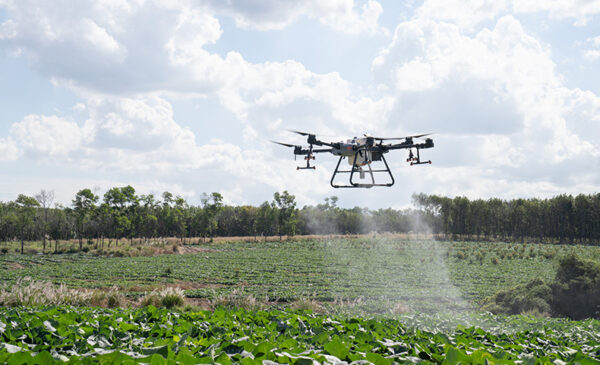
Overview: The DJI Agras T30 is designed specifically for UAV drone for agriculture crop monitoring and spraying. This drone is equipped with a 30-liter tank for spraying, making it ideal for large-scale farming operations. The Agras T30 can cover large areas efficiently and accurately, reducing the time and resources needed for crop care. Its advanced sensors and radar systems ensure safe and precise operation, even in challenging environments.
Key Benefits: The DJI Agras T30 is perfect for agriculture with drones, especially when it comes to large farms that need fast and effective spraying. Its large tank and wide spray reach mean you can cover more ground in less time, improving efficiency. The intelligent route planning system helps farmers create the most efficient spraying paths, reducing overlap and saving on chemicals. The drone for agriculture can also follow the terrain, ensuring that spraying is even across fields with uneven ground. It’s a reliable UAV drone for agriculture that saves both time and money while ensuring crops get the care they need.
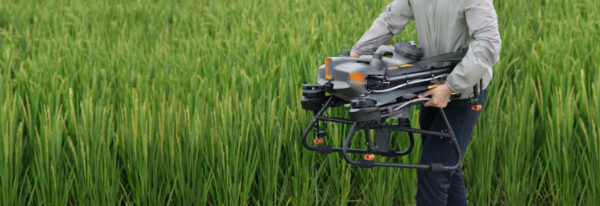
Overview: The DJI Agras T10 is a smaller but highly effective drone for agriculture and spraying. With a 10-liter tank, this drone is ideal for small to medium-sized farms. The Agras T10 is compact and easy to transport, but it still packs a punch with its precision spraying and ability to cover large areas quickly.
Key Drone Specifications:
Key Benefits: The DJI Agras T10 is perfect for farmers looking for an affordable and efficient solution to spraying crops. It’s compact and easy to use, making it a great UAV for agriculture that can be deployed quickly. Despite its smaller size, it covers large areas with precision, ensuring that crops get the right amount of nutrients or pesticides. This drone in agriculture & farming offers a smart spraying system that adjusts based on the speed and movement of the drone, giving farmers peace of mind that they’re not wasting any resources.
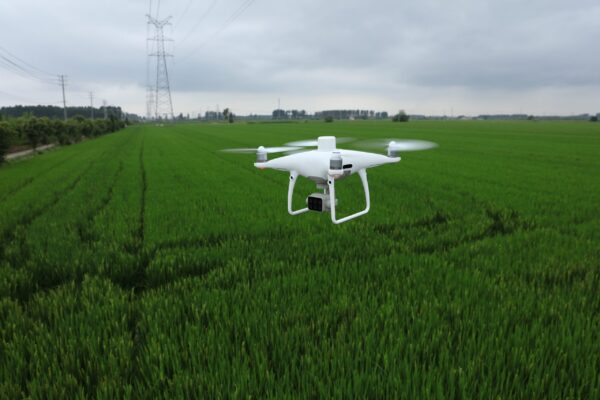
Overview: The DJI Phantom 4 RTK is another excellent choice for UAV drone for agriculture crop monitoring. While it doesn’t have spraying capabilities, its high-precision GPS and advanced mapping software make it an essential tool for surveying and monitoring crops. With real-time kinematics (RTK) technology, this drone provides centimeter-level accuracy, making it ideal for precise mapping and planning.
Key Benefits: The DJI Phantom 4 RTK is a valuable tool for farming with drones. It can capture detailed images of crops, allowing farmers to create precise maps and monitor crop health. The real-time data collection feature makes it easy to assess plant health, water stress, and pest problems. This drone for agriculture is ideal for farmers who want to improve their crop management strategies through detailed monitoring and analysis.
| Fact | Details |
|---|---|
| Drone Market Size (2024) | $6.73 billion |
| Estimated Market Size by 2030 | $22.57 billion |
| Annual Growth Rate (CAGR) | 19.6% |
| Increased Yield from Drone Usage | Up to 8% |
| Key Applications | Crop monitoring, spraying pesticides, precision agriculture, field scouting, irrigation management |
These numbers highlight how UAV drones for agriculture are becoming even more important. By using drones for agriculture, farmers are growing more food, protecting their crops better, and saving valuable time. It’s clear why more people are relying on these high-tech tools to help with their agriculture with drones efforts.
Check Out Autel Drones at Best Price
Check Out DJI Drones at Best Price
Farmers face numerous challenges every day, from unpredictable weather to managing pests and crop diseases. These issues can make farming not only stressful but also financially difficult.
However, with the introduction of UAV drones for agriculture crop monitoring and spraying, many farmers are now finding smart solutions that save time, money, and effort.
Here’s how these advanced technologies are helping farmers overcome common challenges and improving their operations.
Unpredictable Weather Unstable weather patterns can severely affect crops. Heavy rains or droughts can damage fields, making it hard for farmers to react in time.With UAV drones for agriculture, farmers can monitor their fields immediately after bad weather, identifying any damage and taking quick action to protect their crops.
Pests and Crop Diseases Pests and diseases are major concerns for farmers. They can spread quickly and ruin entire fields if not detected early. Traditionally, farmers had to walk through their fields for hours to inspect for issues. Now, drones for agriculture fly over the fields, capturing detailed images that help identify affected areas. This allows farmers to target treatments precisely, reducing the use of pesticides and saving money.
Time-Consuming Field Inspections Manually inspecting large fields takes a great deal of time and energy, often leading to missed signs of problems. Using a UAV for agriculture, farmers can scan vast areas in just a few minutes. The drone in agriculture & farming collects real-time data, enabling farmers to make quick decisions without the long hours of manual inspections.
High Input Costs The cost of fertilizer, water, and pesticides can be significant for farmers. Without precise information, many farmers overuse these inputs, leading to wasted resources and higher expenses. By utilizing farming with drones, farmers can apply exactly what their crops need, based on accurate data from the UAV drone for agriculture, leading to better resource management and reduced costs.
Labor Shortages Finding labor for field monitoring and crop spraying has become increasingly challenging. Agriculture with drones helps to reduce the need for manual labor. Drones for agriculture can perform many tasks, such as crop monitoring and spraying, with precision, helping farmers overcome the challenge of labor shortages.
Read: Autel EVO Lite Enterprise VS DJI Mavic 3 Thermal
Read: Best Jobs for Drone Pilots – Top Careers as a UAV Pilot
Check out: Best DJI and Autel Drone Camera Price
Check out: Drone with 4k Camera
Check out: Best Drones with Thermal Camera
By adopting UAV drones for agriculture crop monitoring and spraying, farmers can significantly cut costs. They use less pesticide, water, and labor, and can identify problems early to avoid crop losses. In addition, these drones have been shown to boost crop yields by up to 8%, leading to increased profits at harvest time.
The use of UAV drones for agriculture is revolutionizing farming, making it more efficient and cost-effective. These advanced technologies are helping farmers tackle the daily challenges of weather, pests, and high input costs while ensuring their farms remain profitable and productive.
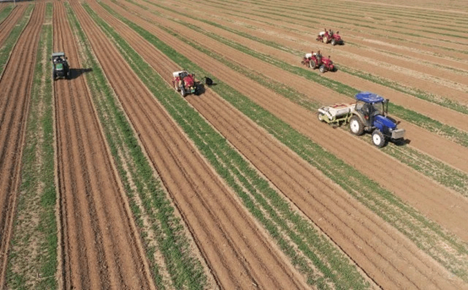
UAV drones for agriculture crop monitoring and spraying are small flying machines that farmers can control from the ground. These drones for agriculture help by flying over farms and fields to gather useful information.
Equipped with cameras and special sensors, they take detailed pictures and measure things like temperature and moisture in the soil.
This data helps farmers understand what’s happening with their crops and land without having to walk through every part of the field.
With advanced technology like high-quality cameras and sensors, UAV drones for agriculture have become powerful tools for managing crops and even taking care of animals.
They allow farmers to check on their fields from the sky, finding early signs of problems like plant diseases or pests. This information helps farmers act quickly and fix problems before they get worse, saving time and money.
Farmers use these drones not only to monitor crops but also for spraying pesticides and fertilizers. This makes sure the plants get the care they need without wasting resources.
The drones can spray specific areas of the field, making the process more efficient. They also help prevent over-spraying, which can be harmful to the crops.
Here are some quick facts about using drones in agriculture & farming:
Check out: Best Photogrammetry Drone
Check out: Best Drone for Powerline Inspection Drone
Check Out: Best Drone for Filmmaking, cinematography & Media
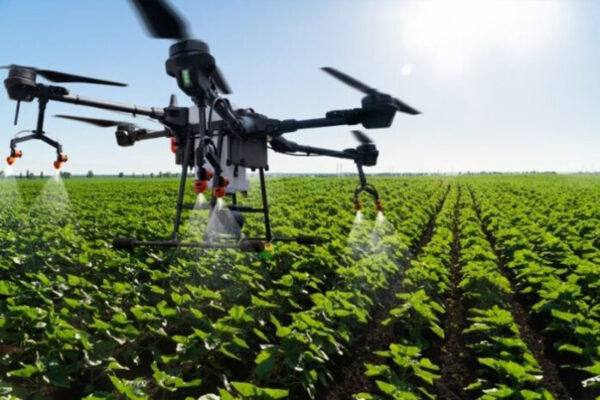
Using UAV drones for agriculture crop monitoring and spraying brings many advantages to farming today. These drones are changing how farmers manage their crops and land by offering smarter, faster, and more accurate ways to care for their fields.
Precise Crop Monitoring: With drones for agriculture, farmers get detailed pictures of their crops, helping them keep an eye on plant health. These images show if plants are growing well or if there are any problems like stress from lack of water or poor soil conditions.
Better Resource Management: By using UAV drones for agriculture, farmers can apply water, fertilizers, and pesticides exactly where they are needed. This means they don’t waste resources and can save money. Plus, it helps protect the environment by using fewer chemicals.
Early Detection of Crop Issues: Drones can spot diseases or pests on crops before the damage spreads. This early detection allows farmers to act quickly and stop the problem from getting worse, ensuring their crops stay healthy.
Reduced Labor and Time: Farming with drones saves time because these drones can cover large areas in just minutes. This means less need for manual labor, and farmers can focus on other important tasks.
Increased Yield and Efficiency: When farmers use UAV drones for agriculture to monitor their fields, they can improve productivity. The drones give detailed data that helps farmers boost their crop yield and overall efficiency.
Land Mapping: With their aerial view, drones create accurate maps of a farm’s land. This helps farmers know their fields better and plan their planting or harvesting schedules more effectively.
Livestock Tracking: Agriculture with drones isn’t just for crops; it can also help with livestock. Farmers can use drones to monitor and count their animals, making sure they are all safe and healthy without having to walk the fields.
Irrigation and Water Use: Drones help monitor irrigation systems, showing farmers where water is needed most. This prevents overwatering or underwatering, which keeps crops in the best condition.
Soil Analysis: UAV drones for agriculture also analyze soil health. This information helps farmers know when to plant and how much fertilizer to use, making their farming more effective.
Crop Protection: Drones in agriculture & farming can even protect crops from birds and other animals by scaring them away, keeping the farm safe from damage.
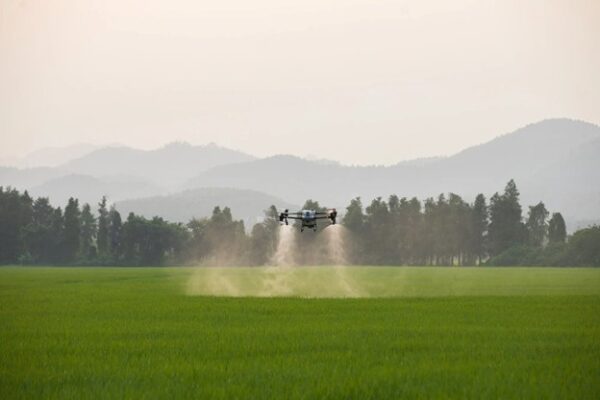
One of the biggest benefits of using a UAV drone for agriculture crop monitoring and spraying is how it helps farmers keep track of their crops’ health. These drones fly over huge fields and gather important pictures and data.
By using special sensors, drones can spot problems like diseases in plants long before they are visible to the human eye. This early detection means farmers can quickly take action to save their crops.
The information collected by the UAV drone for agriculture is extremely helpful for farmers. For example, if a drone shows that a certain part of the field isn’t doing well, the farmer can focus on that specific area.
This helps them take quick steps to fix the problem, ensuring the crops stay healthy. This way of using drone in agriculture & farming leads to better results and higher yields because the farmer knows exactly where to concentrate their efforts.
Farming with drones also helps in understanding the condition of the soil and the field. Drones can fly over the land and gather data about things like soil moisture levels. This information helps farmers know which parts of their fields might need more water or nutrients.
For instance, if the data shows that a part of the field is too dry, the farmer can adjust the irrigation to water that area more. This ensures that the entire field gets the right amount of water, which means better growth for the crops.
By using UAV drones for agriculture, farmers can make sure that every part of their field is taken care of properly.
Besides monitoring crops, UAV drones for agriculture are now being used to plant seeds. These drones can fly over large fields and plant seeds much faster than people can by hand.
This method not only saves time but also reduces the amount of labor needed.
Using drones for agriculture ensures that the seeds are planted at the correct depth and in the right spots, leading to stronger plants. This is especially helpful in big fields or places that are hard to reach.
Agriculture with drones makes planting more efficient and effective, allowing farmers to cover more ground in less time.
With UAV drones for agriculture crop monitoring and spraying, farmers can apply pesticides and fertilizers exactly where they are needed. These drones are incredibly precise, which means they only spray the crops that need treatment.
This not only saves money by reducing waste but also helps protect the environment by using fewer chemicals.
This kind of drone for agriculture technology is a game changer. It allows farmers to be more careful about where they spray, ensuring the health of the crops while minimizing the impact on the environment.
Water is one of the most important resources in farming, and drones in agriculture & farming play a key role in managing it. Drones equipped with special sensors can check water levels in different parts of the field, helping farmers figure out exactly where water is needed.
This targeted watering ensures that crops get just the right amount of water, preventing waste and making the farm more sustainable.
With UAV drones for agriculture, farmers can make sure their crops are healthy while using water wisely, which is especially important in places where water is scarce.
| Statistic | Details |
|---|---|
| Average increase in crop yield with drones | Up to 25% |
| Reduction in chemical use with precision spraying | Up to 60% less pesticide |
| Area covered by a drone in one flight | Over 100 acres |
| Time saved in planting seeds using drones | 85% faster than traditional methods |
| Global agricultural drone market growth | Expected to reach $5.7 billion by 2025 |
By embracing UAV drone for agriculture crop monitoring and spraying, farmers can stay ahead of challenges, maximize efficiency, and improve sustainability.
From better crop monitoring to more accurate spraying and water management, drones are shaping the future of farming for the better.
Every farm is different, so choosing the right drone is crucial. At our Drone Shop, we have a variety of Aerial Drones suited for different agricultural tasks. Whether you need a drone for crop monitoring, spraying, or irrigation, we’ll help you find the perfect match for your farm’s needs.
Selecting the right drone for agricultural use is essential for improving efficiency and productivity on the farm. With various options available, including the Autel EVO II Pro V3, farmers need to consider their specific needs, budget, and the unique features that each drone offers. Here’s a precise guide to help farmers choose the best UAV drone for agriculture crop monitoring and spraying.
Farmers should start by determining the primary purpose of the drone. For crop monitoring, high-resolution imaging is crucial, while for spraying, a drone with a larger tank capacity is essential. Understanding these needs will help narrow down the choices. For instance, if monitoring and spraying are both required, drones like the DJI Agras T30 and Autel EVO II Pro V3 provide versatile solutions.
The size of the farm greatly influences drone selection. Larger farms benefit from drones that can cover more ground quickly. The DJI Agras T30, with its extensive spraying capabilities, is designed for substantial areas. Conversely, the Autel EVO II Pro V3 is also efficient for medium-sized farms due to its robust flight time and imaging capabilities, making it a strong contender for farmers with varied needs.
For effective crop monitoring, the camera quality is critical. The Autel EVO II Pro V3 boasts a 6K video resolution and a 20MP camera, enabling farmers to capture detailed images of their crops. This feature is invaluable for detecting pests and monitoring crop health. The DJI Phantom 4 RTK is another excellent option for farmers focused on precise mapping and monitoring.
Farmers should look for drones with long flight times to maximize coverage during each flight. The Autel EVO II Pro V3 offers a flight time of up to 40 minutes, allowing farmers to complete extensive monitoring or spraying sessions without frequent recharges. This is particularly useful for large fields where minimizing downtime is critical.
Budget is a significant factor when choosing a drone. While high-end models like the DJI Agras T30 offer advanced features for large-scale operations, the Autel EVO II Pro V3 presents a more affordable option without compromising quality. This drone provides high-quality imaging and decent flight time, making it suitable for small to medium-sized farms that need a reliable yet cost-effective solution.
Farmers should consider the training and support offered by the manufacturer. Drones like the Autel EVO II Pro V3 often come with user-friendly interfaces and online support, making them accessible for those new to drone technology. Having access to good customer support can help resolve any issues that arise during operation.
Case Study Overview: A corn farmer in Iowa utilized the DJI Mavic 2 Enterprise to detect disease outbreaks in his fields. By flying the drone equipped with a high-resolution camera, the farmer captured detailed images of the corn plants, allowing for early identification of a fungal infection.
Source: This case study is discussed in various agricultural technology forums and detailed in videos showcasing drone applications for disease detection on YouTube.
Case Study Overview: A rice farmer in China employed the DJI Agras T30 for crop spraying, addressing challenges related to traditional ground-based methods. The drone’s large tank and efficient spraying capabilities allowed for quick treatment of large rice fields.
Source: This case study can be found in agricultural magazines and on YouTube channels dedicated to drone technology in farming.
Case Study Overview: A wheat farmer in Australia used the Autel EVO II Pro V3 for crop mapping and health assessments. The farmer conducted multiple flights over the fields to gather data on crop growth and health using the drone’s high-resolution imaging capabilities.
Source: This application is highlighted on agricultural forums and various YouTube videos demonstrating the use of the Autel EVO II Pro V3 for crop monitoring.
Case Study Overview: A cotton grower in Texas implemented the DJI Phantom 4 RTK to manage irrigation efficiently. The drone’s ability to create high-resolution orthomosaic maps enabled the farmer to assess water distribution across the fields.
Source: This case study is available in agricultural research papers and is featured in several videos on YouTube that demonstrate the practical applications of the DJI Phantom 4 RTK in irrigation management.
1. What is a UAV drone, and how is it used in agriculture?
A UAV drone is an unmanned aerial vehicle that can be used in agriculture for tasks like crop monitoring, mapping, spraying pesticides, and assessing plant health. These drones help farmers gather data quickly and efficiently, improving productivity and sustainability.
2. How do drones help in crop spraying?
Drones equipped with spraying systems can cover large areas quickly and apply pesticides or fertilizers with precision. This method reduces chemical use, minimizes environmental impact, and can save time compared to traditional spraying methods.
3. What types of drones are best for agriculture?
Drones like the DJI Agras series, DJI Mavic 3, and Autel EVO II Pro V3 are popular for agriculture. These drones offer advanced imaging, long flight times, and the ability to carry spraying equipment, making them suitable for various agricultural tasks.
4. How do drones improve pest management?
Drones can identify pest infestations early through high-resolution imaging and NDVI mapping. This allows farmers to target specific areas for treatment, reducing pesticide use and improving crop health.
5. What is NDVI, and why is it important for agriculture?
NDVI stands for Normalized Difference Vegetation Index, a metric used to assess plant health based on light reflectance. Drones can capture NDVI data to help farmers monitor crop vigor, identify stress, and optimize inputs like water and fertilizer.
6. Are drones expensive to maintain for agricultural use?
The cost of maintaining a drone for agriculture varies based on the model and usage. While initial investments can be high, many farmers find that the increased efficiency and savings in inputs offset these costs over time.
7. Can drones operate in different weather conditions?
Most agricultural drones are designed to operate in light rain and moderate winds. However, extreme weather conditions, such as heavy rain or high winds, can affect flight safety and performance, so it’s essential to check weather forecasts before flying.
8. What kind of data can drones collect for agriculture?
Drones can collect various data types, including high-resolution images, thermal data, NDVI maps, and 3D terrain models. This information helps farmers make informed decisions about irrigation, fertilization, and pest control.
9. How do I get started with using a drone for agriculture?
To start using a drone for agriculture, farmers should research the types of drones available, understand local regulations, and consider training for effective operation. Many manufacturers also offer workshops and resources for new users.
10. Are there any regulations for using drones in agriculture?
Yes, regulations vary by country, but most require drone operators to register their drones and follow safety guidelines. In the U.S., for example, the FAA mandates that drones be operated within visual line of sight and prohibits flying over people without a waiver.
Top 10 Best Drones in Construction
DJI Thermal Drone and Night Vision Drone Comparison
Autel EVO Lite Enterprise VS DJI Mavic 3 Thermal
Drone Pilot Career: Exploring Job Opportunities in the UAV Industry
Top 16 Best DJI Alternative Drones – Top DJI Drone Competitor
Detailed Guide to Photogrammetry with Drones: Best Drone with Camera
Choosing The Right Drone for LiDAR
DJI Mini 3 vs Mini 3 Pro? Which Drone Should you Buy?
DCAA and GCAA Drone and UAV Fly Zone Map in Dubai, UAE
Get UAV License and Drone Permit in UK
Best Drone in Media and Filmmaking Cinematography

Sustainable Agriculture Insight from XRTech Group Maximizing Yields on Slopes: Terrace Farming, Conservation, and Precision Monitoring Explore the ancient practice
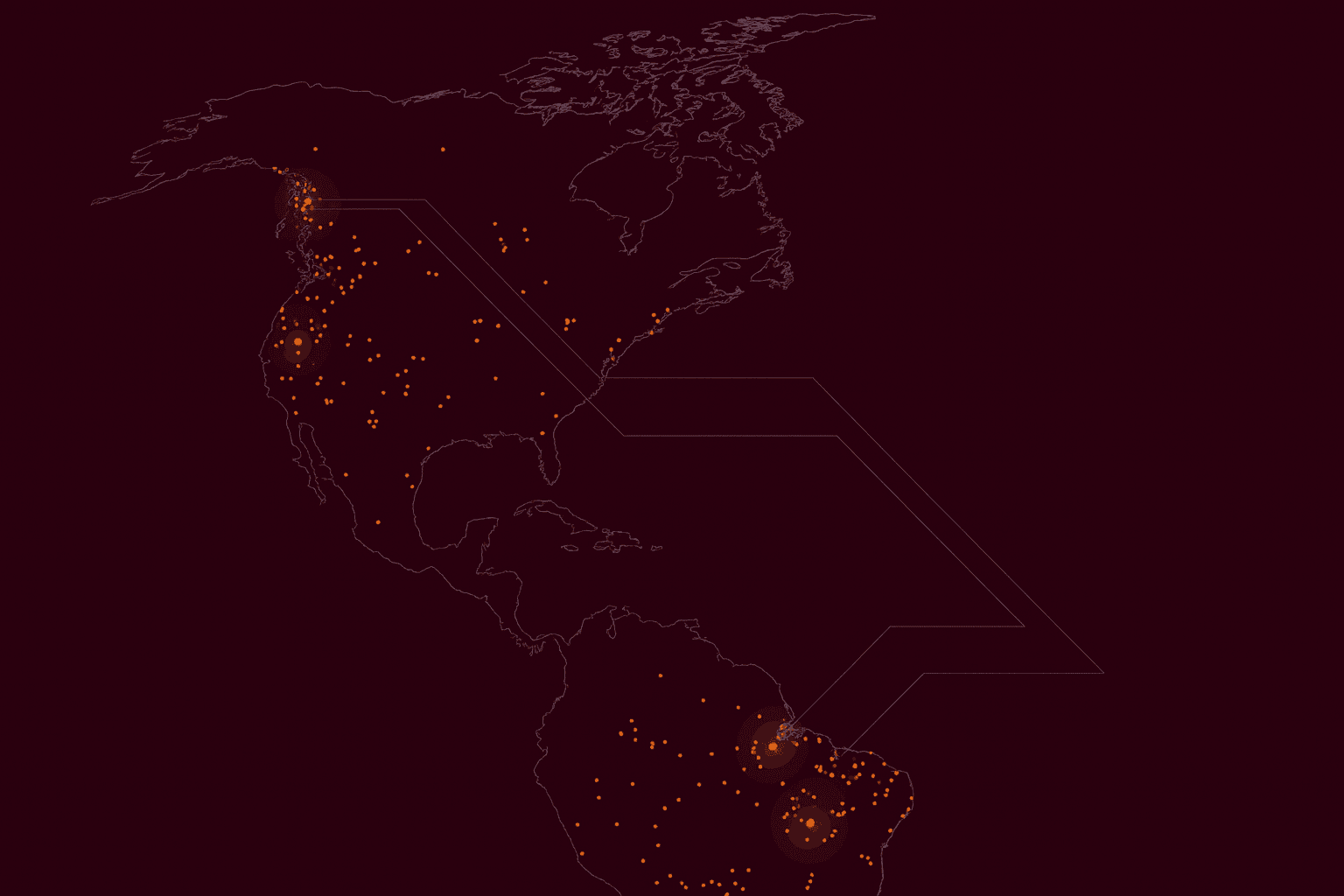
Geospatial Insights Can Satellite Detect Gold? The Truth Behind Satellite Imagery and Gold Exploration For centuries, the search for gold